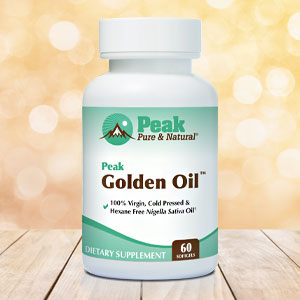Get Easy Health Digest™ in your inbox and don’t miss a thing when you subscribe today. Plus, get the free bonus report, Mother Nature’s Tips, Tricks and Remedies for Cholesterol, Blood Pressure & Blood Sugar as my way of saying welcome to the community!
Toilet seat or pillowcase: Which holds more infectious germs?

I have a couple of questions for you:
One, what do you think is the dirtiest place in your house?
And two, how often do you launder your sheets and pillowcases?
If you’re like most of us, your answer to the first question was “the bathroom, of course!”
After all, it’s where we go to clean off the day’s dirt and “relieve” ourselves. Not to mention that flushing the toilet is the most effective way to disperse bathroom germs far and wide!
It’s a good guess, but you’d be wrong…
Turns out that those comfy sheets and pillowcases you’re sleeping on every night are home to more harmful bacteria than you’ll find in any bathroom.
Here’s what you need to know, and how to keep your bed from making you sick.
The four types of bacteria living in your bed
According to a recent report, there are four main strains of bacteria that thrive on your unwashed pillowcases and sheets:
- Gram-negative rods are the most common. They cause pneumonia and other infections. And, the CDC tells us that most gram-negative rods can lead to antibiotic resistance.
- Bacilli cause a range of infections from food poisoning to meningitis and endocarditis.
- Gram-positive cocci, the most well-known being staphylococcus and streptococcus. These bacteria are also behind a range of infections that includes strep throat, sepsis, urinary tract and blood infections.
- Gram-positive rods, which are not typically harmful to humans.
A dirty pillowcase has more bacteria than a toilet seat
A recent study looked at just how infectious your sheets and pillowcases get during a period of just four weeks.
To see just how many tiny critters collect on sheets and pillowcases, volunteers swabbed their sheets for four weeks without washing them.
After one week, both pillowcases and sheets contained between three and five million CFUs (colony-forming units) of bacteria per square inch.
By week four, they both had almost twelve million CFUs.
Pillowcases that were washed just one week ago had over 17 thousand times the number of bacteria found on a typical toilet seat!
In particular, pillowcases harbored more bacilli and gram-positive cocci.
In other words, after just one week, your pillowcase could be a breeding ground for some nasty infections.
How often should you wash your bedding?
The American Academy of Dermatology recommends washing your sheets at least once a week.
But pillowcases should be swapped out at least 2-3 times per week!
“When you get into bed, you contaminate your bed linens with dead skin cells (about 50 million per day), sweat, makeup, lotions, hair, and anything else you’ve picked up during the day, from pollen and pet dander to fungal mold and dirt particles to bacteria and viral particles as well,” says Dr. Hadley King, a board-certified dermatologist in New York.
Dead skin cells and sweat provide food for dust mites, adds Dr. King, attracting them to your bed and helping them multiply.
A few more tips to avoid a germ-filled slumber
The following tips can help you keep your sheets, pillowcases, blankets, and even your mattress relatively germ-free.
Use heat. Wash your bedding in hot water. But if washing instructions on your sheets say to wash in cold water, the Mayo Clinic recommends putting them in the dryer for at least 15 minutes first, at a temperature above 130 degrees. Then wash and dry.
Wipe down your bed rails or headboard. The CDC recommends doing this to lower your exposure to pathogens.
Make your bed. Dr. Alok Vij, a dermatologist at the Cleveland Clinic, says that making your bed “will reduce the moisture that dust mites and bacteria need to proliferate.”
Editor’s note: Did you know that when you take your body from acid to alkaline you can boost your energy, lose weight, soothe digestion, avoid illness and achieve wellness? Click here to discover The Alkaline Secret to Ultimate Vitality and revive your life today!
Sources:
Unwashed pillowcases contain more bacteria than toilet seats: report — New York Post
Bacteria in your Bed — Amerisleep
Why a Derm Says You Should Be Changing Your Pillowcases Every Couple of Days — Well + Good
How Often Should You Change Your Sheets—Really? — Well + Good














